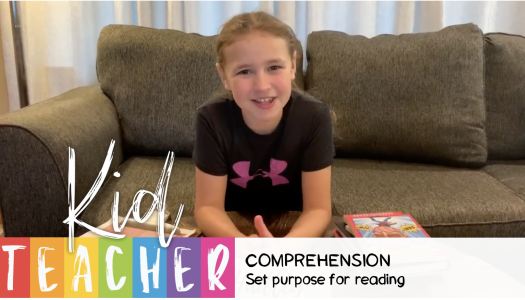How could we possibly ask students to read independently if they didn't see themselves as readers yet?
At that time we would partner students up or create a center for them to do, because they couldn't read words yet. We heard a similar response when asking our older students who were ELL, just arriving to our country and not being able to read English. Without books in the 30+ different languages in our schools we felt puzzled and frustrated. To us it was a bit like "the chicken or the egg".
 As we researched beginning reading acquisition we discovered children learn to read by engaging in the act of reading by "Looking closely at the pictures", "Reading the Words" and also "Retelling a Familiar Story". With this in mind we begin our teaching each year with modeling "3 Ways to Engage with a Book" using a short picture book. It sounds like this:
As we researched beginning reading acquisition we discovered children learn to read by engaging in the act of reading by "Looking closely at the pictures", "Reading the Words" and also "Retelling a Familiar Story". With this in mind we begin our teaching each year with modeling "3 Ways to Engage with a Book" using a short picture book. It sounds like this:
"Girls and Boys, there are three ways to engage with a book and I am going to show you how to do all three. First I am going to look closely at the pictures. Let see, the cover of this book has a big world and 5 different people on the front; I think this book is going to be about these five people. Here is the first page, here are those five people again and there are white houses in the background. They are holding a sign."
We continue through the story telling about the pictures, at the end of the reading we say:
"Boys and Girls I just showed you one way to engage with a book is to look closely at the pictures. I am going to write that down on our chart to remind us of the 3 ways to engage with a book. Now I am going to show you another way, I am going to read the words."
We then read the same book, but this time reading the words. As the end of the story, we remind the students that reading the words is another way to enjoy a book and we add "Read the Words" to our chart of ways to engage with a book. We then tell the students there is another way to enjoy a book and that is to retell a familiar story. We use the same book and retell the story by looking at the pictures and stating what is happening.
The first time we did this, we didn't have anyone say, "I cannot read to myself because I don't know how to read". From that day forward, all students were able to be engaged in books by looking closely at the pictures, reading the words or by retelling a story. We even teach this lesson to older students. We want to remind our older students that looking closely at pictures is a critical strategy, especially if we are reading nonfiction, graphic novels, and some textbooks. So with our older students we model looking closely at the pictures with one of these genres.






 As we researched beginning reading acquisition we discovered children learn to read by engaging in the act of reading by "Looking closely at the pictures", "Reading the Words" and also "Retelling a Familiar Story". With this in mind we begin our teaching each year with modeling "3 Ways to Engage with a Book" using a short picture book. It sounds like this:
As we researched beginning reading acquisition we discovered children learn to read by engaging in the act of reading by "Looking closely at the pictures", "Reading the Words" and also "Retelling a Familiar Story". With this in mind we begin our teaching each year with modeling "3 Ways to Engage with a Book" using a short picture book. It sounds like this: